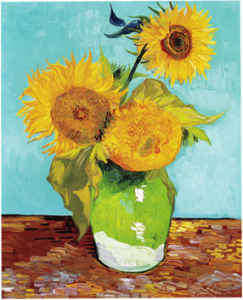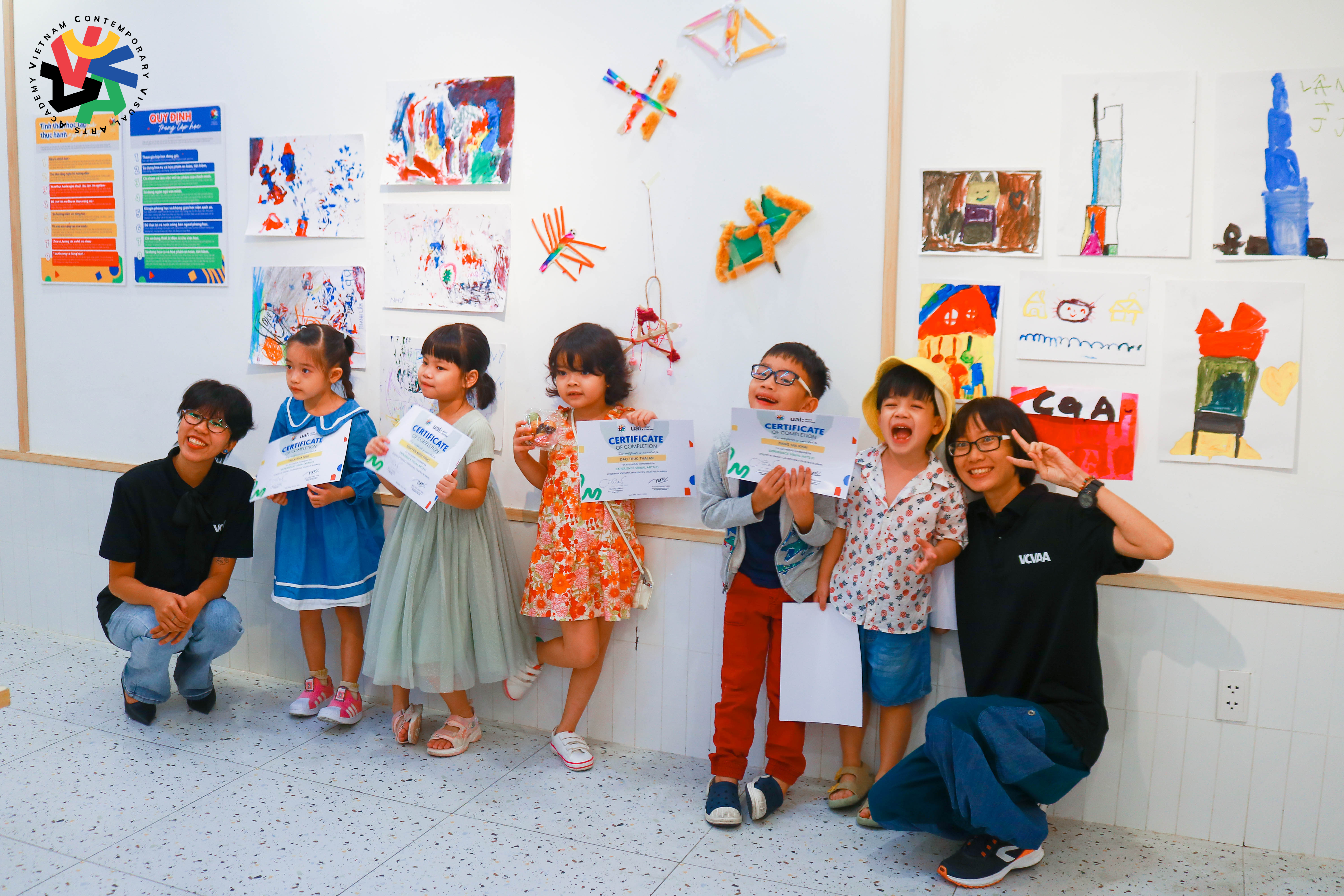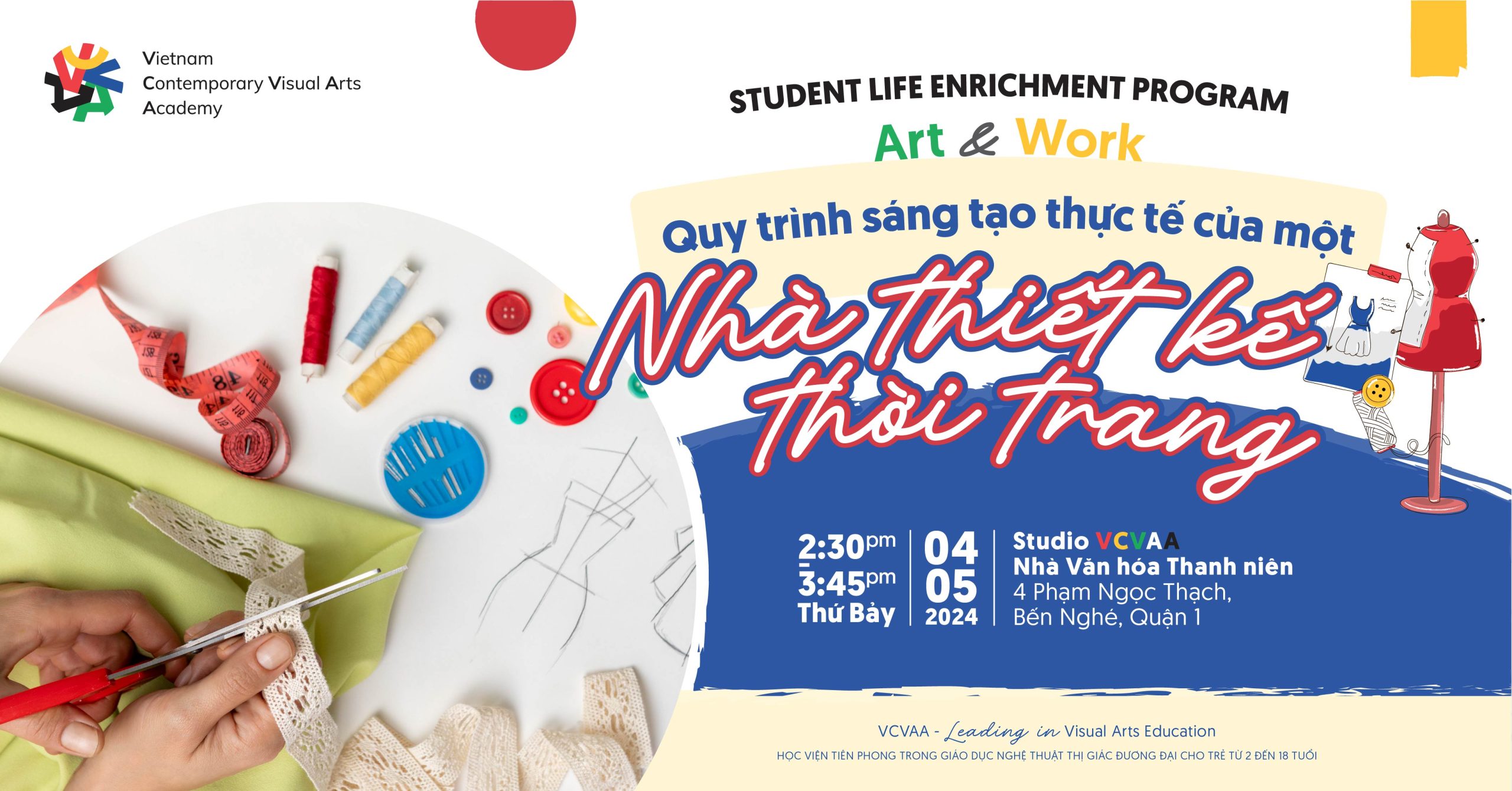Before reading, VCVAA invites parents to reflect on the following questions from their perspective:
- What do you think art is? What is aesthetics?
- Why do we need art and aesthetics in life?
- Have you ever practiced art before? How did you feel during that process?
- Do you think art and aesthetics are only for those in the art world?
Have you ever wondered, "What is art? How is an art object different from another object? First, if we can agree that an art object is an object that human beings make and that originates in someone's mind and imagination, we have a working base, a starting point. However "beautiful" a sunset or an autumn tree, they are natural phenomena, not works of art. We use "art" words to describe the colors, lines, and shapes that we see in these natural objects, and in so doing, we find parallels between art and nature. So, what is a work of art, and how is it different from other things? How does a painting of sunflowers by van Gogh differ from the actual sunflowers?
|
|
The difference is that van Gogh was inspired by the visual information before him and interpreted it in his own unique way to make the painting. Art, then, is a visible expression of perceptions, feelings, ideas, and values. It is based on human perceptions, and we recognize and understand it through our senses. A wide range of objects can be considered works of art, but all will have distinctive or valued qualities and meanings that individuals or particular cultures accept and preserve. Works of art can make us think about ideas, people, places, events, and spiritual matters, and can make us feel and understand things in the world more deeply than we would otherwise. Some cultures have no word for art since everything the people in those cultures make, wear, and use—even the dwellings in which they live—are artifacts with significant symbolic content, skillful workmanship, and artistic style. AESTHETICS FOR CHILDREN By definition, aesthetics is a branch of philosophy that deals with the nature of art and, as such, is concerned with questions and thoughtful reflections about the meaning and purpose of artistic processes and products, concepts that help us better understand what we see and encounter. When we think, converse, and form questions on aesthetic concerns, we try to evaluate, define, and clarify different cognitive and emotional responses to artworks. Such aesthetic questions cause us to take a fresh look at some of our long-held opinions and ask us to withhold judgments until we have done some critical thinking and some careful studying to learn all we can about what we see. The deeper we delve into the issue of aesthetics, the more we find that the questions we ask, or that others ask us, cannot be answered with a simple yes or no. Often, we find that understanding aesthetics involves being able to accept answers that are neither right nor wrong and to tolerate several points of view. And we often wind up with one question leading us to yet another question. Aesthetics is the enjoyment, sensitivity, and appreciation of beauty that can involve nature, human creations, and all art forms. It exists in a person's senses, in the object, and in the mind, and it comes quite naturally to children. When we say something is beautiful, we are talking primarily about its effect on the senses. For children, aesthetics develops as they actively explore their environment through hearing, seeing, touching, tasting, and smelling. The new information that children take in through their senses strengthens their understanding and capitalises on their natural curiosity and sense of wonder about their environment. We want children to be curious about their world, to stop and look at a butterfly, to notice buds on the trees, to share a beautiful sunset, or to be intrigued by a waterfall. BENEFITS OF AESTHETIC EXPERIENCES Although young children naturally appreciate their environment, their aesthetic sense needs to be fostered. Sensory experiences invite appreciation, wonder, and enjoyment. They also orient children toward discovery and imagination. When children and artists respond to materials and people in their environment, they become aesthetic participants in specific experiences. Aesthetic experiences emphasize doing things for the pure joy of it. Aesthetic experiences benefit young children in various ways:
-
Supporting the learning and development of the whole child -
Helping children appreciate beauty in their world -
Increasing their sensitivity to problems and people -
Providing opportunities for them to learn different ways of doing things -
Promoting their curiosity
-
Learning to value the arts -
Fostering concept development -
Thinking independently and asking good questions
AESTHETICS AND DIVERSITY In this time of globalization, when the world celebrates the impact and beauty of diversity in unity, the range of different arts experiences offer learning opportunities for the curious young minds. Music, dance, drama, technology, and visual art promote understanding of our world. It is important to teach young learners that there are many ways to do the same thing and that the beauty of our world is in its diversity. Studying the arts of other times, people, and cultures helps children appreciate and understand creative ideas in art forms from around the world. In addition, sharing the arts from the cultures of children and their families is a respectful and authentic way to honour diversity. To enrich sensitivity to diversity, children need to explore a common concept from different perspectives. For instance, take the concept that everyone has a family, but each family is unique.
-
Children can think about families as they listen to nonfiction books such as Papa Do You Love Me ( Joosse, 2005), picture books such as Tell Me Again About the Night I Was Born (Curtis, 2007b), and poetry books such as Me I Am (Prelutsky, 2007) to learn about different families. -
In the visual arts, they might view art works such as On the Beach by Winslow Homer, The Family by Eugene Grigsby, Jr., or House I by Roy Lichtenstein to explore diverse family experiences; they can also make and illustrate books about their family history, members, routines, celebrations, or careers.
-
In music they can listen to music and watch dances such as Raffi's (2008) Songs of Our World Ways or Fiestas: A Year of Latin American Songs of Celebration (Orozco, 2004) to understand different musical heritages. -
And in drama, they can act out family-centered activities such as roles at home and at work, or family traditions, celebrations, and activities.
Each of these art forms and personal objects offers children a way to learn about different cultural heritages. Exploring diversity through music, dance, drama, and visual arts helps expand and enrich children's understanding and acceptance of others. DEVELOPING CHILDREN'S AESTHETIC SENSE: WHAT CAN TEACHERS DO? Children develop their aesthetic sense when they have opportunities to create and look at nature, the arts, and cultural artifacts. Creative expression through music, visual arts, drama, and dance connects us to our own feelings and allows us to experience the feelings of others. We need to teach children that their feelings about individual works of art are personal and valid. Everyone has a right to like or not like any work of art. Introducing children to aesthetics means providing time for children to "see" with their minds, as well as their eyes. An art experience space for children should include opportunities for children to see and touch beautiful things. Try hanging a poster of a painting in the classroom, children may ask questions and enjoy the artwork; or if a ukulele is added to the music center, children may enjoy both the sounds it makes and its visual appeal. These thoughtful touches from the place of knowledge and understanding stimulate children's aesthetic development. As you nurture children's natural expressiveness, you help them be sensitive, creative individuals who can appreciate beauty in their world. You can encourage children to enjoy the beauty of their world in different ways, as follows:
-
Create experiences with nature and talk about them with children, such as taking nature walks to appreciate the animals, wildlife, and flowers. -
Add beauty to your classroom by providing natural items, posters, postcards, and calendars of the work of fine artists and playing beautiful music during activities and routines. You can also make games for children to sort and classify artwork by subject matter, technique, colors, or personal preference. -
Encourage children to observe and react to colors, patterns, and textures in the objects they use by describing what they see and how it makes them feel. -
Take children on meaningful trips to experience works of art in your community, such as seeing a sculpture in a public garden, and to galleries, studios, and performances.
-
Share special objects, places, and rituals that celebrate beauty in their environment to increase children's sensitivity to diversity.
QUESTIONS ABOUT AESTHETICS FOR REFLECTIVE DISCUSSION Asking questions to contemplate together with children creates opportunities for them to nurture their aesthetic sensitivity, imagination, and curiosity. There are no right or wrong answers to each question; the most important thing is that during this process, parents and children always listen to and respect each other's opinions!
-
Is all art beautiful? Can art be ugly? Find an artwork in a magazine or book that you could describe as "beautiful”. Then find another artwork that you would describe as "not beautiful." Then try to interpret each artist's message or each painting's meaning. Which artwork was more successful? -
Must all art contain a message or have a meaningful concept behind it? Can art be an object that exists for its own sake? Can art have practical and functional uses? -
If you like an object, is it art? If you do not like it, could it still be considered art? What part does popularity play in art? -
How would a person who lived during the Italian Renaissance define art differently than a twentieth-century artist or a member of a tribe in Africa or Australia? -
What is the most important art form? Art theme? Art subject? Are landscapes as important as portraits? -
Should art only please the artists and the culturally elite, or should it touch a wider viewing audience? Does an artist have social responsibilities? Should artists be able to explain verbally the meanings of their works? -
Is art the same thing as freedom? Is all art creative? Is anything creative art? Can an artist work in today's society with no restraints? Is creativity the same as doing whatever you want? Is all self-expression art? -
Does our culture value the aesthetic experience? Why or why not? What is an aesthetic experience? What parts of our being are involved in an aesthetic experience: emotional, sensory, intellectual, social, creative, kinesthetic? -
If a person claims to be an artist, is that person an artist? How do great artists and mediocre artists differ? Can a child be an artist? -
If an object is in an art museum, does that make the object a work of art? How do museum curators and directors decide what objects to display? -
Is an artwork forgery a work of art? -
When you view an artwork for the first time, can you have an aesthetic experience without knowing anything about the artwork's history, or about the culture and/or artist from which the artwork sprang? Would learning more about the artwork increase your aes-thetic experience? -
Should art that is on public display be censored? If your answer is yes, what criteria should be used, and who should make these decisions? If your answer is no, what reasons can you give for your viewpoint? Should public funds be used to buy artworks for public buildings? Why or why not? Who should make these decisions? -
Do artists have any obligations to society? Does society have any obligations to artists? -
Will an artwork that was considered "beautiful" several hundred years ago still be considered beautiful today?
NGUỒN DỊCH VÀ BIÊN SOẠN:
-
Herberholz, D & Herberholz, B (1992). Artworks for Elementary Teachers: Developing Artistic and Perceptual Awareness, pp. 105 - 111. -
Isenberg, J & Durham, J (1993). Creative Materials and Activities for the Early Childhood Curriculum.






